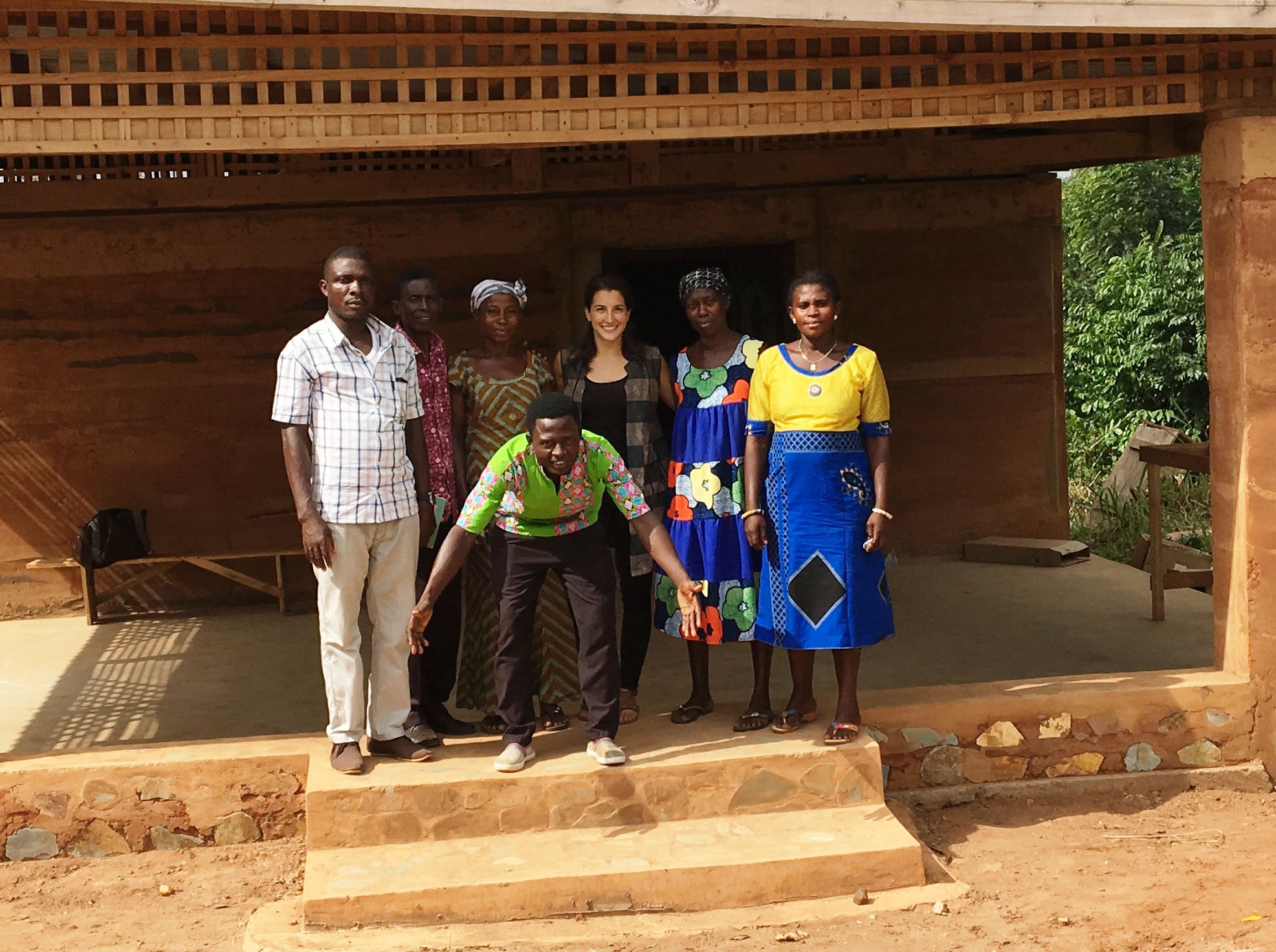
Written by Akaa Project founder, Lauren Grimanis
It was 10 minutes before break time and the kindergarten students were hurriedly scribbling in their notebooks. Their heads bobbed between looking at the sentences written neatly across the dusty blackboard and then down to their own penmanship. One by one, students stood up, seemly satisfied and handed in their completed assignment. The teacher scanned the paper and as soon as he nodded the student would sprint out to the school yard. After ten minutes, there was one student left, struggling to finish the assignment. The teacher approached the boy and asked why he was not finished.
I was not happy with the way the teacher had approached the situation and I pulled him aside to discuss it. The Asiafo Amanfro Community School had been in session for a little over 14 months. We were still transitioning into a full school day and a new structure. We were also working out the bumps with our untrained, yet passionate, community teachers.
 After I finished talking to the teacher, I looked over to see one of the older Kindergarten girls sitting next to the boy. She was coaching him through the assignment, letter by letter. Not once did she look outside to where her friends and peers were jumping rope or playing ampe. She never left the boy’s side until the assignment was complete. I watched from the corner of the classroom and caught her eye only once.
After I finished talking to the teacher, I looked over to see one of the older Kindergarten girls sitting next to the boy. She was coaching him through the assignment, letter by letter. Not once did she look outside to where her friends and peers were jumping rope or playing ampe. She never left the boy’s side until the assignment was complete. I watched from the corner of the classroom and caught her eye only once.
That moment taught me many things and created a long-lasting connection to that girl, Mary Dede (Dede prounced dayday). Maybe she sees the admiration I have for her, or she recognizes how I have a special interest in her – because since that first glance 5 years ago, we have continued to connect through quick glances, puzzled looks, smiles and funny faces – even if we’re 50 feet away from each other, it always seems that our eyes lock.
Mary Dede is now 13 years old. She has accelerated in the classroom and has been recognized as a leader by her teachers and peers. She is an outstanding role model for her fellow classmates, boys and girls. Mary Dede is a stellar example of what girls can accomplish in the classroom when they are given the opportunity. Furthermore, she is the only girl in her family of 8 (Dede means first born girl). In her rural village, her gender dictates that she is responsible for much of the housework, including cooking, fetching water, and taking care of the entire family. She is the hardest working girl I have ever met.
This year marks the Asiafo Amanfro Community School’s fifth full academic year. A couple weeks into September, I learned that Mary Dede would no longer be attending our school. She had outgrown our classes: she’s easily the most advanced in her class, and the entire school. I also believe a major part of her changing schools was her changing body, as we do not have a proper toilet. Her family decided that it was time for her make the hour’s walk to the Akpamu Government School, which extends to junior high school. In August, Mary Dede had finished our third grade level, anticipated to move on to fourth at Akpamu. At the government school, she was placed in 6th grade.
This not only speaks to the work that the Asiafo Amanfro Community School is doing to ensure quality educational opportunity for children in rural areas but to Mary Dede’s ambition and serious #girlpower.
Girls like Mary Dede are the world’s next generation of leaders. So, today, on the International Day of the Girl, let’s make gender inequalities the topic of conversation, the focus for global development and progress, and let’s make sure there is opportunity for all the Mary Dede’s in the world.
Find out what you can do to make a difference on the International Day of the Girl (and beyond) >>







Off